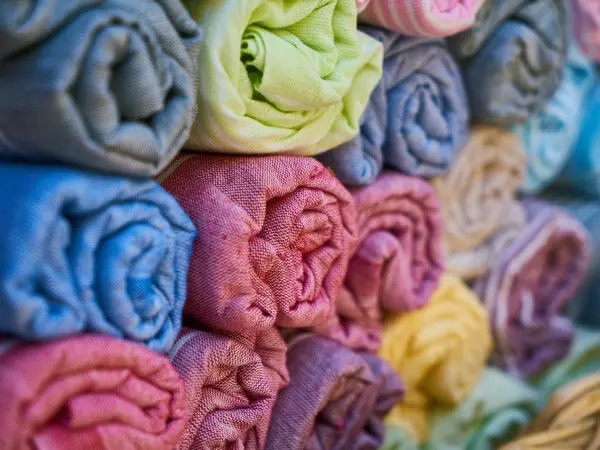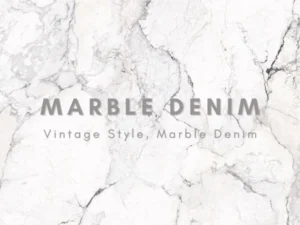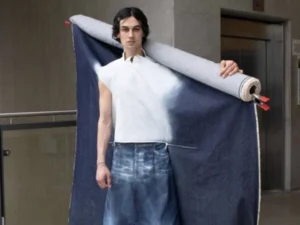Twill is a popular choice in the textile industry for its durability and unique diagonal rib pattern. In recent years, an enhanced version of twill fabric has attracted much attention-stretch twill fabric. The fabric is stretchy, providing comfort and flexibility that standard twill fabrics lack.
In this article, we take a deep dive into the world of stretch twill, exploring its properties, applications, care, and more.
Now let’s start to talk about:
- What is stretch twill fabric?
- Understand the stretchability of twill fabric
- Advantages of Stretch Twill Fabric
- Applications of stretch twill fabrics
- Maintenance of Stretch Twill
- How to choose high-quality twill fabric with elastic?
What Is Stretch Twill Fabric?
Stretch twill is a special variation of regular twill. Known for its stretching and recovery abilities, it offers increased comfort and freedom of movement. This type of fabric is usually made of natural fibers (such as cotton) or synthetic fibers (such as polyester) combined with elastane or spandex to give it stretch. Stretch twills vary in weight, density, and composition, allowing them to meet a wide range of application needs.
Understand the Stretch Ability of Twill Fabric: Does Twill Fabric Stretch?
- Factors affecting scalability stretchability
When it comes to twill, several factors can affect how stretchable it is.
- Fiber content
The type of fiber used in a twill fabric plays an important role in determining its stretch ability. Natural fibers tend to be less elastic than synthetic fibers, such as cotton less stretched than polyester. Blended fibers can enhance the stretchability of the fabric.
- Organizational structure
The organizational structure of the twill fabric also affects its tensile potential. Twill usually has a twill weave, but the tightness of the weave affects its stretchability. A loose weave provides more elasticity, while a tight weave provides more stability.
- Blending with spandex
One of the factors affecting the tensile properties of twill fabrics is the addition of spandex fibers. These synthetic fibers increase the elasticity of the fabric, allowing it to stretch and recover for maintaining its shape.
- Stretch Twill vs. Non-Stretch Twill
Differences and Comparisons:
The main difference between stretch twill and non-stretch twill is their stretch.
Non-stretch twill made only of natural or synthetic fibers with limited stretch. It offers durability, structural stability, and a crisp look, but lacks the flexibility and comfort offered by stretch twill. Non-stretch twill is often used in applications that don’t require stretch, such as tailored suiting or sturdy home décor.
Stretch twill offers the best of both sides. Incorporating elastane or spandex fibers, it provides enhanced elasticity and recovery for greater freedom of movement and comfort. Stretch twill is ideal for garments with stretch, such as jeans, activewear, and slacks.
- Elastic recovery
The ability of elastic twill to restore its original shape:
Stretch recovery refers to the ability of a fabric to return to its original shape after being stretched. This is the fundamental property of stretch twill. When stretched, the elastane or spandex fibers in the stretch twill allow it to comfortably adapt to body movements. What sets premium stretch twill apart, however, is its excellent recovery properties. After stretching, the fabric should spring back and return to its original shape without significant deformation or elongation. This quality ensures that garments made from stretch twill retain their fit and shape even after repeated wearing and stretching.
Understanding the stretchability, variability, and stretch recovery of twill fabrics enables you to make informed material selection decisions for your desired application. If your fabric requires a stretch, consider fiber content, weave construction, and elastane or spandex content. Distinguishing the difference between stretch twill and non-stretch twill can help you to choose the best fabric based on project requirements. Finally, evaluating stretch recovery will ensure your stretch twill garment retains its shape and comfort over time.
Advantages of Stretch Twill Fabric
- Improved comfort and flexibility
Stretch twill provides a higher level of comfort than non-stretch fabrics. The added stretch allows the fabric to move with the wearer’s body, accommodating movement without restriction.
Example: Stretch twill pants bend and stretch easily, making them ideal for activities that require flexibility, such as yoga or manual labor.
- Better Fit and Freedom of Movement
Stretch twill stretches for better fit and shape retention. It molds to the contours of the body, ensuring a flatter silhouette without sacrificing comfort.
Example: A stretch-twill blazer offers a tailored look while maintaining freedom of movement, making it suitable for both professional and casual occasions.
- Versatility for multiple garment types
Stretch twill fabric is versatile and suitable for different garment types. From trousers and skirts to dresses and jackets, this fabric offers endless style possibilities.
Example: A fitted and comfortable stretch-twill dress that allows the wearer to easily transition from day to night without feeling restricted.
- Anti-wrinkle and anti-wrinkle
Stretch twill is more anti-wrinkle and anti-wrinkle than many other fabrics. This quality ensures that garments made from this fabric retain a neat and freshly ironed look even after prolonged wear or packaging.
Example: Stretch chinos maintain a smooth, wrinkle-free look throughout the day, making them a practical choice for business professionals or those who travel a lot.
Applications of Stretch Twill Fabrics
- Fashion industry
- Jeans and Trousers: Stretch twill is commonly used to make jeans and trousers. Its elasticity ensures a comfortable fit while maintaining its characteristic firmness and durability.
- Jackets and Blazers: Stretch twill fabric can be found in blazers and jackets, providing a stylish and structured look with added flexibility.
- Skirts and Dresses: Stretch twill can be used in skirts and dresses to create a fitted and comfortable garment for all occasions.
- Workwear and Uniforms
Stretch twill fabric combines comfort and durability, making it an excellent choice for workwear and uniforms. It allows for unrestricted movement while maintaining a professional look.
- Home Textiles and Upholstery
Stretch twill fabrics can also be used in home textiles and upholstery creations. Its versatility and durability make it suitable for items such as curtains, cushion covers, and upholstery.
Maintenance of Stretch Twill
Proper care is essential to prolong the life and maintain the quality of your stretch twill garments.
- Washing and Drying Recommendations
Follow the care instructions provided by the fabric manufacturer, but stretch twill can usually be machine washed in cold water on a gentle cycle. Avoid harsh cleaners or bleach. Hang or lay flat to dry to prevent excessive shrinkage or warping.
- Ironing and Steaming Guidelines
Stretch twill fabrics may not require ironing unless specifically stated on the label. If desired, use a low to medium heat setting and gently steam to remove wrinkles while avoiding excessive heat or pressure.
- Storage tips to maintain quality and durability
Store stretch twill garments in a cool, dry place out of direct sunlight. Avoid folding clothing along creases for long periods, as this will leave permanent marks. Recommended for hanging or rolling items.
How to Choose High-Quality Twill Fabric With Elastic?
When choosing a stretch twill fabric, the following factors should be considered:
- Fabric Weight and Density
Choose a weight and density that matches your desired garment application. Thicker, denser fabric provides more structure, while lighter weight provides a better drape.
- Visual and Tactile Evaluation
Inspect the fabric for any blemishes, irregularities, or tears. Feel the texture of the fabric to determine its softness and stretch potential.
- Consider specific project requirements
Assess the intended application of the fabric, such as the required level of stretch and desired aesthetics. Consult a fabric expert or read reviews to ensure a fabric meets your specific needs.
We also have High-Quality Twill Fabric With Elastic, Power elasticity (40%-70%), exceptional recovery, and authentic denim looks. Especially for flattering fit or skinny jeans.
You can click on the high-stretch denim fabric to learn more.

Conclusion
Stretch twill is a versatile functional material that has revolutionized the textile industry. Its stretch provides unrivaled comfort and flexibility, making it a favorite of fashion designers and garment manufacturers. With its many advantages and practical applications, stretch twill continues to shape contemporary fashion trends and meet the needs of everyday consumers.
By understanding the properties, applications, care, and quality considerations of stretch twill fabric, you can make an informed decision when selecting and using this fabric for your next project. Embrace the comfort and style of stretch twill and explore the possibilities it brings to your wardrobe and home décor.





